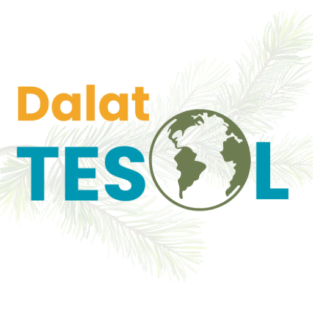By Dalat TESOL
A conversation about how language shapes identity — and why culture is never neutral
🪞Who Do You Become in English?
Have you ever noticed how your personality shifts slightly when speaking a second language? Maybe you speak more directly, or feel less expressive. Some learners say they feel “more confident” in English, while others say they feel “less themselves.”
That’s not just about vocabulary — it’s about identity.
Language is not simply a tool for communication. It’s a cultural practice, a social identity marker, and a gateway to belonging. When we switch languages, we also negotiate who we are, how we’re seen, and how we want to be understood.
🔍 What Is Identity in Intercultural Communication?
In intercultural studies, identity is more than a fixed category (like “Vietnamese” or “international student”). It is:
- Multiple (we all have many identities: gendered, linguistic, professional, national…)
- Contextual (how we speak at home may differ from how we speak in class)
- Negotiated (our identities shift depending on who we’re talking to and how we’re positioned)
As Norton (2013) famously argued, identity is “how a person understands their relationship to the world, how that relationship is constructed across time and space, and how the person understands possibilities for the future.”
This means that learning a language is never just about grammar. It’s about access — to communities, opportunities, and even self-expression.
🌏 Vietnamese Learners Navigating English: A Local Lens
Let’s make this real.
Lan, a Vietnamese MA student in TESOL, is active and witty in Vietnamese. But in English seminars, she becomes hesitant. She feels her jokes don’t land, her intonation sounds too flat, and her ideas seem “less smart.”
When asked to present, she focuses on sounding “correct” rather than “herself.” She later reflects, “In English, I feel like a quiet version of me.”
Lan’s experience isn’t unusual. Research shows that many second-language speakers adjust their personality depending on their perceived fluency, accent, or fear of stereotyping.
Some learners feel liberated — English offers distance from local hierarchies. Others feel invisible — unable to express cultural nuances or humor.
The process of identity negotiation in language learning is emotional, social, and deeply tied to belonging.
🎓 Essentialism vs. Constructionism: How We See Culture
A key debate in intercultural communication is whether culture and identity are:
| View | What It Means | Example |
|---|---|---|
| Essentialist | Identities are fixed, and cultures have stable “core traits” | “Vietnamese students are always respectful and avoid eye contact” |
| Constructionist | Identities are fluid, shaped by discourse, history, and interaction | “Respect is shown in different ways depending on situation, language, and power dynamics” |
As language educators and researchers, adopting a constructionist perspective helps us avoid overgeneralization and see our students as dynamic individuals navigating complex social worlds.
🔄 Language Learning as Identity Work
Norton’s concept of investment helps here. Unlike “motivation,” which is often individual and psychological, investment is social and ideological. A learner invests in a language because they expect it to return something valuable — access, mobility, power, inclusion.
If a student doesn’t speak up in class, is it a lack of confidence — or are they protecting their identity from potential judgment?
A Vietnamese student at a UK university said:
“In my culture, interrupting a teacher feels rude. In class, others debate, and I’m silent. But inside, I have ideas. I just don’t know when it’s my turn.”
Recognizing this helps us design more equitable, supportive classrooms.
✍️ Task for Reflection or Discussion
Think of a time you spoke a second or third language. Did you feel more or less confident, expressive, or “yourself”?
What identities did you perform — and how were they shaped by the language, the setting, or others’ expectations?
Alternatively:
In groups, discuss: How do language learners negotiate their identities in new linguistic and cultural environments? Use terms like “constructionism,” “investment,” or “identity shift.”
🧠 Why This Matters in Applied Linguistics
In TESOL and applied linguistics, understanding the link between language and identity helps us:
- Teach beyond grammar and accuracy
- Create inclusive classroom spaces
- Understand silence or hesitation not as deficits, but as identity protection
- Challenge policies that treat learners as “deficient” natives of English
If we want to empower students, we must recognize their whole linguistic selves — and understand that language learning is also identity work.
📘 Want to Read More?
- Norton, B. (2013). Identity and language learning: Extending the conversation. Multilingual Matters
- Holliday et al. (2021). Intercultural communication: An advanced resource book for students. Routledge.
- Kramsch, C. (2010). The Multilingual Subject. Oxford University Press.
